This works, but is really dull and boring. The vertices simply map from one model to another, without any offsets, no gravity or whatever you want to throw into the mix.
So you can apply any effects you can imagine and code.
This is not the exact answer to your question, but this is the simplest motivating example of what you can do with shaders. Spoiler: the link to a working example is at the end of this answer.
Let's transform this

into this

with funny swarming particles during transition

We'll use THREE.BoxBufferGeometry() with some custom attributes:
var sideLenght = 10;
var sideDivision = 50;
var cubeGeom = new THREE.BoxBufferGeometry(sideLenght, sideLenght, sideLenght, sideDivision, sideDivision, sideDivision);
var attrPhi = new Float32Array( cubeGeom.attributes.position.count );
var attrTheta = new Float32Array( cubeGeom.attributes.position.count );
var attrSpeed = new Float32Array( cubeGeom.attributes.position.count );
var attrAmplitude = new Float32Array( cubeGeom.attributes.position.count );
var attrFrequency = new Float32Array( cubeGeom.attributes.position.count );
for (var attr = 0; attr < cubeGeom.attributes.position.count; attr++){
attrPhi[attr] = Math.random() * Math.PI * 2;
attrTheta[attr] = Math.random() * Math.PI * 2;
attrSpeed[attr] = THREE.Math.randFloatSpread(6);
attrAmplitude[attr] = Math.random() * 5;
attrFrequency[attr] = Math.random() * 5;
}
cubeGeom.addAttribute( 'phi', new THREE.BufferAttribute( attrPhi, 1 ) );
cubeGeom.addAttribute( 'theta', new THREE.BufferAttribute( attrTheta, 1 ) );
cubeGeom.addAttribute( 'speed', new THREE.BufferAttribute( attrSpeed, 1 ) );
cubeGeom.addAttribute( 'amplitude', new THREE.BufferAttribute( attrAmplitude, 1 ) );
cubeGeom.addAttribute( 'frequency', new THREE.BufferAttribute( attrFrequency, 1 ) );
and THREE.ShaderMaterial():
var vertexShader = [
"uniform float interpolation;",
"uniform float radius;",
"uniform float time;",
"attribute float phi;",
"attribute float theta;",
"attribute float speed;",
"attribute float amplitude;",
"attribute float frequency;",
"vec3 rtp2xyz(){ // the magic is here",
" float tmpTheta = theta + time * speed;",
" float tmpPhi = phi + time * speed;",
" float r = sin(time * frequency) * amplitude * sin(interpolation * 3.1415926);",
" float x = sin(tmpTheta) * cos(tmpPhi) * r;",
" float y = sin(tmpTheta) * sin(tmpPhi) * r;",
" float z = cos(tmpPhi) * r;",
" return vec3(x, y, z);",
"}",
"void main(){",
" vec3 newPosition = mix(position, normalize(position) * radius, interpolation);",
" newPosition += rtp2xyz();",
" vec4 mvPosition = modelViewMatrix * vec4( newPosition, 1.0 );",
" gl_PointSize = 1. * ( 1. / length( mvPosition.xyz ) );",
" gl_Position = projectionMatrix * mvPosition;",
"}"
].join("\n");
var fragmentShader = [
"uniform vec3 color;",
"void main(){",
" gl_FragColor = vec4( color, 1.0 );",
"}"
].join("\n");
var uniforms = {
interpolation: { value: slider.value},
radius: { value: 7.5},
color: { value: new THREE.Color(0x00ff00)},
time: { value: 0 }
}
var shaderMat = new THREE.ShaderMaterial({
uniforms: uniforms,
vertexShader: vertexShader,
fragmentShader: fragmentShader,
//wireframe: true //just in case, if you want to use THREE.Mesh() instead of THREE.Points()
});
As you can see, all the magic happens in the vertex shader and its rtp2xyz() function.
And in the end, the code of the function of animation:
var clock = new THREE.Clock();
var timeVal = 0;
render();
function render(){
timeVal += clock.getDelta();
requestAnimationFrame(render);
uniforms.time.value = timeVal;
uniforms.interpolation.value = slider.value;
renderer.render(scene, camera);
}
Oh, and yes, we have a slider control in our page:
<input id="slider" type="range" min="0" max="1" step="0.01" value="0.5" style="position:absolute;width:300px;">
Here's a snippet
var scene = new THREE.Scene();
var camera = new THREE.PerspectiveCamera(60, window.innerWidth / window.innerHeight, 1, 1000);
camera.position.set(10, 10, 20);
var renderer = new THREE.WebGLRenderer({antialias: true});
renderer.setSize(window.innerWidth, window.innerHeight);
document.body.appendChild(renderer.domElement);
var controls = new THREE.OrbitControls(camera, renderer.domElement);
var vertexShader = [
"uniform float interpolation;",
"uniform float radius;",
"uniform float time;",
"attribute float phi;",
"attribute float theta;",
"attribute float speed;",
"attribute float amplitude;",
"attribute float frequency;",
"vec3 rtp2xyz(){ // the magic is here",
" float tmpTheta = theta + time * speed;",
" float tmpPhi = phi + time * speed;",
" float r = sin(time * frequency) * amplitude * sin(interpolation * 3.1415926);",
" float x = sin(tmpTheta) * cos(tmpPhi) * r;",
" float y = sin(tmpTheta) * sin(tmpPhi) * r;",
" float z = cos(tmpPhi) * r;",
" return vec3(x, y, z);",
"}",
"void main(){",
" vec3 newPosition = mix(position, normalize(position) * radius, interpolation);",
" newPosition += rtp2xyz();",
" vec4 mvPosition = modelViewMatrix * vec4( newPosition, 1.0 );",
" gl_PointSize = 1. * ( 1. / length( mvPosition.xyz ) );",
" gl_Position = projectionMatrix * mvPosition;",
"}"
].join("\n");
var fragmentShader = [
"uniform vec3 color;",
"void main(){",
" gl_FragColor = vec4( color, 1.0 );",
"}"
].join("\n");
var uniforms = {
interpolation: { value: slider.value},
radius: { value: 7.5},
color: { value: new THREE.Color(0x00ff00)},
time: { value: 0 }
}
var sideLenght = 10;
var sideDivision = 50;
var cubeGeom = new THREE.BoxBufferGeometry(sideLenght, sideLenght, sideLenght, sideDivision, sideDivision, sideDivision);
var attrPhi = new Float32Array( cubeGeom.attributes.position.count );
var attrTheta = new Float32Array( cubeGeom.attributes.position.count );
var attrSpeed = new Float32Array( cubeGeom.attributes.position.count );
var attrAmplitude = new Float32Array( cubeGeom.attributes.position.count );
var attrFrequency = new Float32Array( cubeGeom.attributes.position.count );
for (var attr = 0; attr < cubeGeom.attributes.position.count; attr++){
attrPhi[attr] = Math.random() * Math.PI * 2;
attrTheta[attr] = Math.random() * Math.PI * 2;
attrSpeed[attr] = THREE.Math.randFloatSpread(6);
attrAmplitude[attr] = Math.random() * 5;
attrFrequency[attr] = Math.random() * 5;
}
cubeGeom.addAttribute( 'phi', new THREE.BufferAttribute( attrPhi, 1 ) );
cubeGeom.addAttribute( 'theta', new THREE.BufferAttribute( attrTheta, 1 ) );
cubeGeom.addAttribute( 'speed', new THREE.BufferAttribute( attrSpeed, 1 ) );
cubeGeom.addAttribute( 'amplitude', new THREE.BufferAttribute( attrAmplitude, 1 ) );
cubeGeom.addAttribute( 'frequency', new THREE.BufferAttribute( attrFrequency, 1 ) );
var shaderMat = new THREE.ShaderMaterial({
uniforms: uniforms,
vertexShader: vertexShader,
fragmentShader: fragmentShader,
//wireframe: true
});
var points = new THREE.Points(cubeGeom, shaderMat);
scene.add(points);
var clock = new THREE.Clock();
var timeVal = 0;
render();
function render(){
timeVal += clock.getDelta();
requestAnimationFrame(render);
uniforms.time.value = timeVal;
uniforms.interpolation.value = slider.value;
renderer.render(scene, camera);
}
body{
margin: 0;
}
<script src="https://threejs.org/build/three.min.js"></script>
<script src="https://threejs.org/examples/js/controls/OrbitControls.js"></script>
<input id="slider" type="range" min="0" max="1" step="0.01" value="0.5" style="position:absolute;width:300px;">




